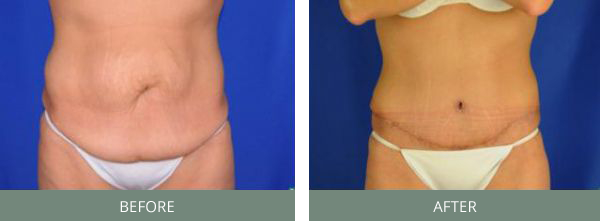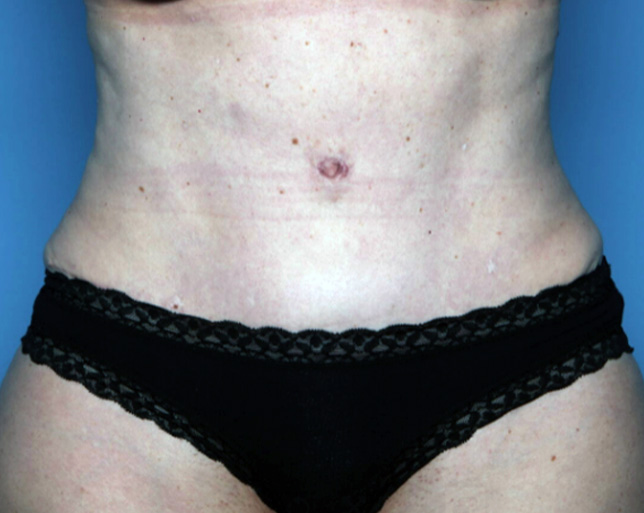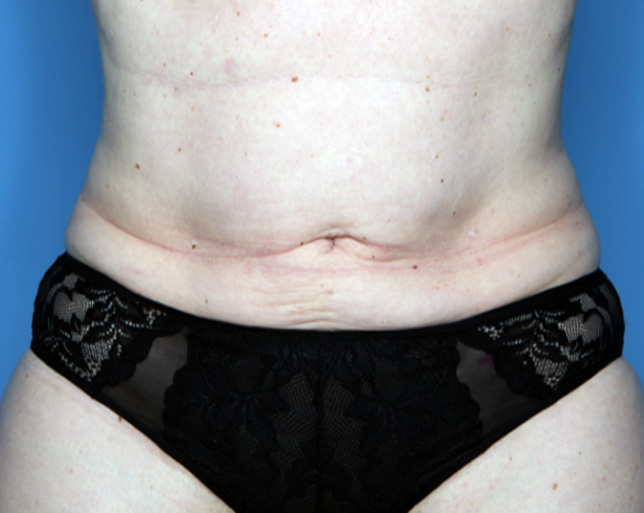SAINT LOUIS BREAST RECONSTRUCTION: DIEP FLAP
What is a DIEP flap? The deep inferior epigastric artery perforator (DIEP) flap uses the abdominal skin and fat to rebuild the breast. Either one or both breasts can be reconstructed with a DIEP flap. In appropriate candidates, it is a significant improvement over the pedicled TRAM flap because the muscle tissue of the abdomen is spared. This leads to quicker recovery times and less weakness of the abdominal wall. The abdominal tissue may provide enough tissue to build a breast without using a breast implant. DIEP flaps can be performed at the time of mastectomy (immediate reconstruction), or later on (delayed reconstruction).
The DIEP flap is a highly technical operation that involves a technique called microsurgery. This means that the abdominal tissues are transferred to the breast area and their blood vessels reconnected under a microscope to maintain blood flow. Surgeons, operating room teams and hospitals that have significant experience with microsurgery perform the DIEP flap.
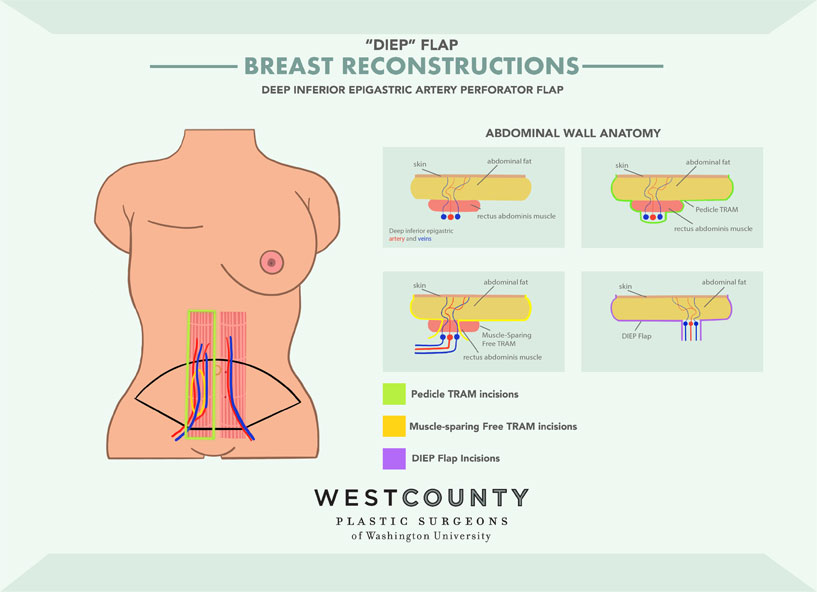
Not all patients are candidates for a DIEP flap, but several other microsurgical and other flap options may still be available. Candidacy for a DIEP flap is determined by the specific anatomy of an individual's deep inferior epigastric artery, previous abdominal surgery, body weight, and aesthetic expectations. On occasion, additional investigations like a CT scan angiogram (CTA) may be requested. If a DIEP flap is not possible, one alternative is a muscle-sparing free TRAM flap, which can be performed by taking minimal muscle and still requires microsurgery. This procedure allows the surgeon to create a larger breast than a DIEP flap and is safer in people who smoke or are heavier (up to a BMI of 35 to 40). A superficial inferior epigastric artery (SIEA) flap may also be possible. This flap completely spares the abdominal wall muscles but can only be performed in select patients who have a useable superficial inferior epigastric artery and vein and are not obese. Another microsurgical option is the transverse upper gracilis (TUG) flap, which uses tissue from the inner thigh to rebuild the breast. Pedicled TRAM or latissimus flaps are also excellent options for breast reconstruction in select patients when microvascular surgery is not a favored option.
DIEP Flap Video
Reconstructive timeline with DIEP flap:
- First operation: Breast reconstruction with DIEP flap(s) ± mastectomy.
- Office visits: Drain removals and wound checks.
- 3 months*: "Touch up" cosmetic appearance of DIEP flap if required; possible balancing procedure on other side. Possible fat grafts to optimize breast contours.
- 6 months*: Nipple reconstruction. Possible fat grafts to optimize breast contours.
- 8 months*: Areola (pigmented circle that surrounds the nipple) reconstruction with tattoo.
- 12 -24 months*: Laser or IPL scar therapy

Dr. Terry Myckatyn and
Dr. Marissa Tenenbaum:
Trusted. Experienced. Committed.
* If you are having an immediate DIEP flap (mastectomy and DIEP flap at the same time) and chemotherapy is required, please add 4 months to the timeline. If radiation therapy is also required, please add 9 months to the timeline.
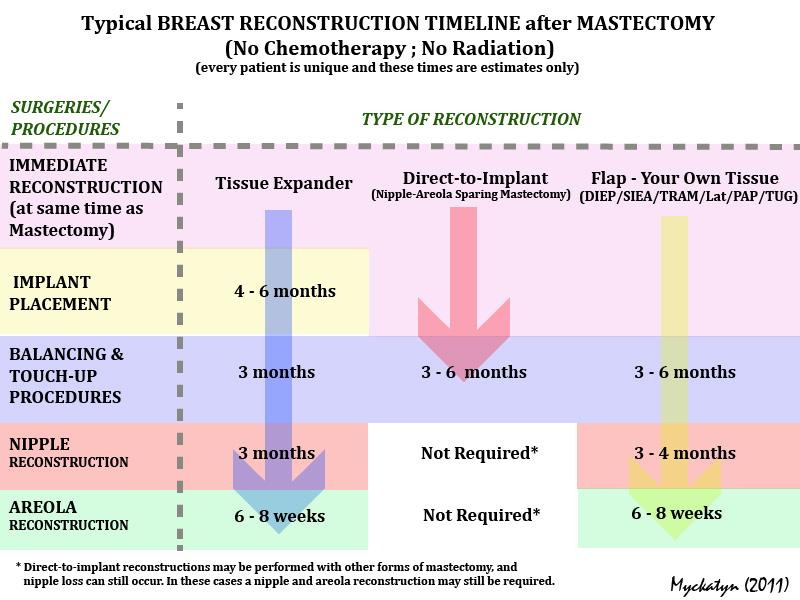
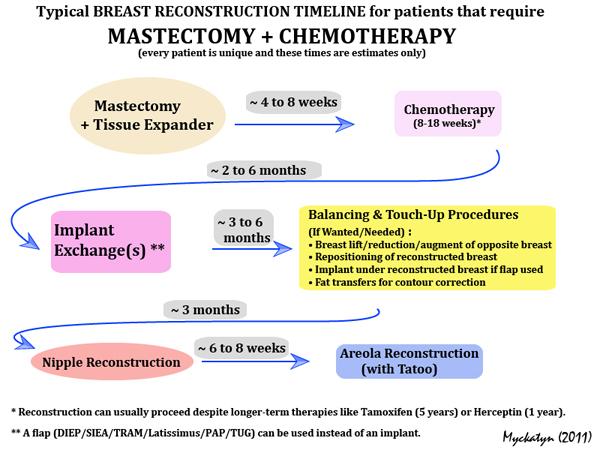
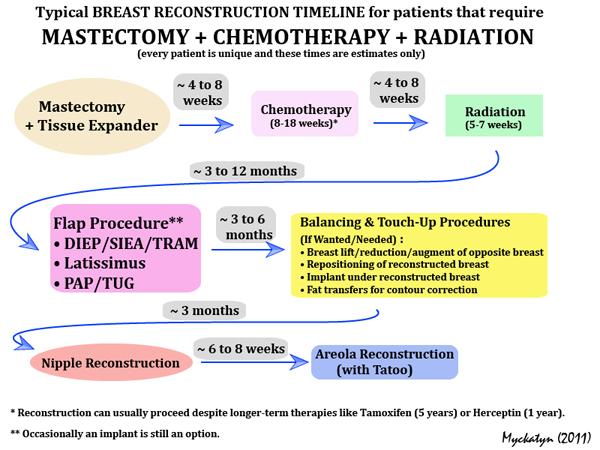
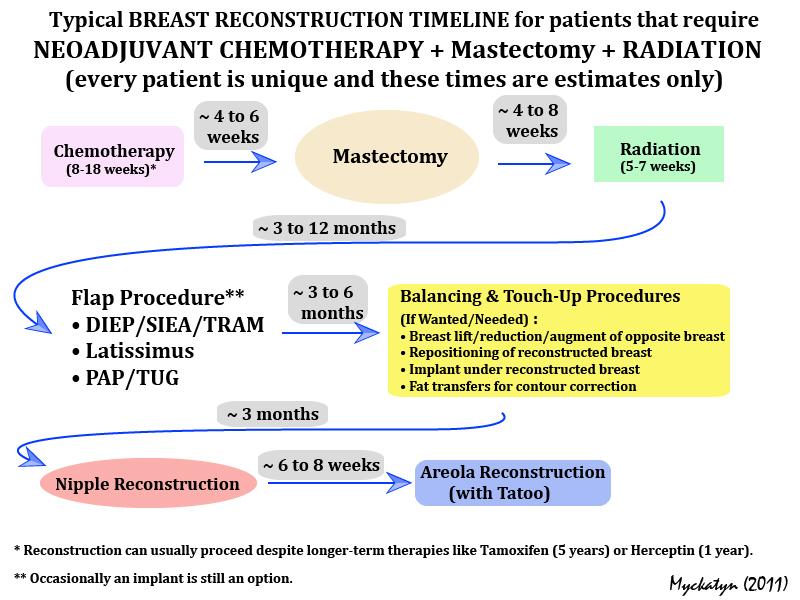
Anesthesia: A DIEP flap is performed with the patient under general anesthesia.
Length of procedure: 4 to 7 hours for one breast, 6 to 10 hours for two breasts.
Before & After
Visit our Photo Gallery to see our patient results.
*Results may vary.
View Patient ResultsEstimated recovery time: Hospitalization is usually 3 to 6 days. You can return to work after 3 to 6 weeks, depending on your job, and you should avoid vigorous activities for 6 weeks. Visible bruising and swelling should begin to improve within 3 weeks. Recovery time, however, is highly variable and depends on your health before surgery and history of smoking and radiation therapy. Unless you have an allergy, you will be required to take aspirin for one year after surgery. To learn how to prepare for a DIEP flap breast reconstruction and what to expect afterwards, click here to download our patient instructions for DIEP flap and free microvascular TRAM flap breast reconstruction.
Side effects: Common side effects include bruising and swelling. Blood flow to your flap will be carefully monitored after surgery. If there are concerns about the flap, you may require reoperation to assess the blood flow. You may have some weakness in the abdominal muscles, although one big advantage of the DIEP flap over a pedicled TRAM flap, in particular, is less abdominal wall weakness. Delayed wound healing and infections may occur. Click here to download a detailed consent form from the American Society of Plastic Surgeons that lists the risks and benefits of a DIEP flap breast reconstruction.
Before-and-after photos of breast reconstructions with DIEP and TRAM flaps: Click here
If you have questions or would like to book a consultation with one of the surgeons at West County Plastic Surgery, please call (314) 996-8800.







